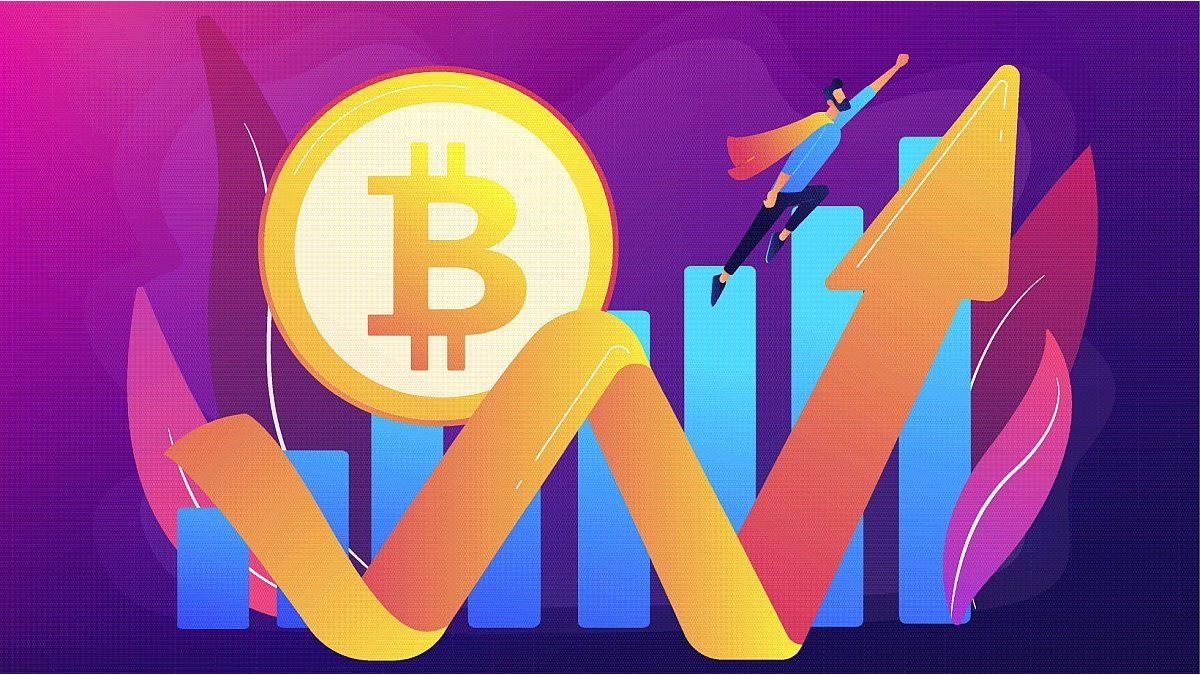The “halving” consists of approximately every 4 years, the amount of bitcoins issued as a reward to “miners” is reduced by half, until the final figure of 21 million bitcoins is issued in approximately the year 2140. . It is estimated that the next “halving” will occur next monthso miners will now receive a remuneration of 3.125 bitcoins, instead of the current 6.25.
The “halving” gives rise to reflect on topics referring to the design of bitcoin.
First, what bitcoin advocates define as the deflationary nature of this asset, pointing to the decreasing supply of bitcoins (halving) over time as an advantage. If the long-term idea of bitcoin is to replace the inflationary currencies issued by Central Banks in a world where the only certainty we have is that everything changes; productivity, the needs of the population, the occurrence of unexpected catastrophes such as the pandemic, devastating climate phenomena, etc., maintaining the fixed supply of an asset based on an immutable mathematical formula would seem to be more of a problem than an advantage.
Secondly, “halving” implies that the reward received by miners decreases over time. The design of bitcoin is based on a very ingenious and powerful creation of incentivesThis means that miners will continue to make the bitcoin network work for as long as it is economically convenient for them. If at some point mining bitcoin became uneconomical or a more profitable activity appeared, the miners would simply stop mining bitcoin to turn to that other activity and the operation of this network would be in trouble.. Additionally, and regarding bitcoin mining, some analysts believe that the halving will further accelerate the process of concentration in a few mining pools, affecting the decentralization of this network.
Another issue to point out has to do with the impact that new technologies can have on the bitcoin network in the coming years.
The enthusiasm with which a new disruptive and powerful technology such as blockchain is embraced is striking, while at the same time rejecting the specific possibility that another innovative technology will put the current one in check in the future.
However, if we know anything about these advances, it is that new technologies “overlap” previous ones, and that these changes are occurring more and more rapidly over time.
However, this future is already seen in the medium term; and the fantastic decentralized scheme that Satoshi Nakamoto devised based on the effort that current digital computers must make to solve these complex cryptographic puzzles It may be affected, for example, with the advent of powerful quantum computers.
Recently, the BIS (Bank for International Settlements) published a series of considerations and warnings in reference to quantum computing and its impact on the banking sector (BIS – Project LEAP, January 2024) that, although focused on banking entities, cover the entire financial system and especially assets based on cryptography, such as Bitcoin.
The BIS document maintains that Once quantum computers reach sufficient size and power, they will be able to break cryptographic encryption schemes. widely used today to ensure the security of financial transactions and data. This makes Quantum computing constitutes one of the most important cybersecurity threats facing the financial system as a whole in the future.
These quantum technological advances also have a geopolitical and business background. There is a global strategic competition between the United States and China to lead the technological race in general and develop quantum processors in particular.. While in China this last effort is concentrated by the State through public universities, in the West quantum advances are led by large private companies such as IBM, Google or Amazon. Although the possibility of having quantum processors that can be mass produced is not immediate, work is already being done with programming languages for the so-called “quantum gates” (Qiskit is the main language developed by IBM for this).
In our region some countries have begun to pay attention to this phenomenon. At the DREX 2023 Annual Meeting of the Central Bank of Brazil, its president Roberto Campos Neto pointed out the potential risk that our entire computer security system based on cryptography is vulnerable to quantum computing..
Many bitcoin advocates minimize the risks of the development of quantum computers, highlighting that the market capitalization of bitcoin is still insignificant compared to the rest of the global financial assets that could be threatened by quantum computers.
However There is an important difference between the Bitcoin network and the rest of the entities with centralized governments (central banks, financial entities, among others).
While andThe decentralized nature of bitcoin makes decision making and execution more complex to respond to any threat, In centralized entities this process is much more agile.
Even within the field of decentralized Blockchains, Ethereum (the second most used cryptocurrency/network), is already planning changes to become resistant to the threat of quantum computing. Last December, its founding member and reference, Vitalik Buterin, published the plan for new updates planned for Ethereum, where it is contemplated migrating the network to “safe quantum” (resistant to quantum computing), through the incorporation of ZKP – Zero Knowledge Proofs.
Zero Knowledge Proof are a complex system of cryptographic algorithms that allow one actor to provide another with certainty that they possess certain information, without having to reveal that information. They have been used to convert “anonymous” transactions made on the Blockchain, allowing account traceability to be broken (the most renowned case of this was Tornado Cash). However, Ethereum is betting on ZKP for two reasons: to achieve much greater network efficiency, and as we mentioned, to make it resistant to the threat of the quantum processor.
Although these threats do not impact the current bullish cycle, they should not be lost sight of due to their effects in the medium and long term.
But returning to the short term and the frenzy that the so-called “digital gold” is currently reawakening, In times of euphoria where the price of the asset points towards infinity, and beyond as well, it seems appropriate to remind retail investors of some characteristics related to bitcoin (which are extended to other crypto-assets).:
- Most transactions that occur on centralized networks, such as exchanges, occur outside of the native Bitcoin network. with security protocols and criteria that are often unknown,
- the formation of The prices at which these assets operate are, at the very least, opaque and extremely volatile.,
- There is a crypto-propaganda machinery that does not stop to clarify risks,
- the centralized custody (as exchanges generally do) of these assets is in many cases labyrinthine and random,
- the jurisdictions where possible disputes are resolved are often found in remote and hostile places to savers,
- There is a marked asymmetry in information and in the use of complex financial instruments (such as derivatives) between more sophisticated and retail investors. In the bearish period that began a couple of years ago, studies showed that large investors (called whales) were able to unwind their positions at the expense of retail buyers,
- when operating in a decentralized manner (P2P) and The saver has custody of his bitcoins, he must be careful with possible scams since those who advise him to operate in this segment, as in the centralized universe, they are not regulated by anyone,
- If you have any problem with your bitcoins, or any crypto-asset, There is no deposit guarantee or regulator to protect them,
- without mentioning the use that launderers, evaders, smugglers, traffickers and fraudsters make of this network (and others).
Having said all this, we regret having to interrupt this exhausting list of preventions (which has more items) to quickly go buy some satoshis and not be left out of the party.
Carlos Weitz– Former president of CNV and Professor of Fintech, Bigtechs, Cryptoactives and Digital Currencies. Buenos Aires’ University
Daniel Diaz – Information Technology Professor. Rosario National University
Source: Ambito
David William is a talented author who has made a name for himself in the world of writing. He is a professional author who writes on a wide range of topics, from general interest to opinion news. David is currently working as a writer at 24 hours worlds where he brings his unique perspective and in-depth research to his articles, making them both informative and engaging.




